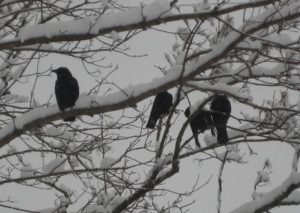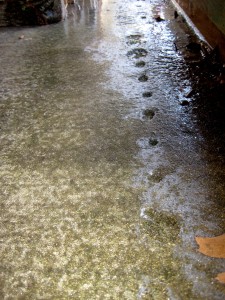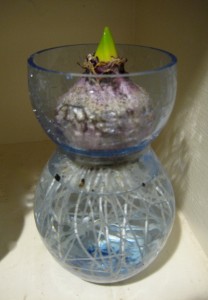
Elmer Green’s greatest gift to humankind was the guidebook he left behind, The Ozawkie Book of the Dead, the ultimate navigational tool for now. Elmer and his wife Alyce took a very successful journey through the fog of Alzheimer’s disease, as Alyce ultimately merged with her high SOUL, while still present in human form.
Simply understood, one’s high SOUL is a center of being that is pure truth, wisdom and love, whose action is only right action, action based on those principles. The center of the little soul is narcissistically limited by its ego’s narrow concern for its own self, as it lacks the broadest view of the high SOUL. Spiritual maturity is arriving at one’s high SOUL, a feat generally attained after death.
Alyce’s little soul was able to advance and merge with her high SOUL while still occupying her physical body in full blown Alzheimer’s disease. The journey of little soul, once identified with its physical body, to high SOUL, is the journey of all souls who leave this world upon physical death.
Elmer defined the human personality as a unit, which included the physical body and the little soul. The little soul has many dimensions. At the level of the personality, it is the mental and emotional components that innervate life in the human body. This soul, also called the astral body, essentially runs the human body, in everyday life, through the energy channels of the chakras.
Thus, for instance, the brain is the physical hard drive of the mind, which is actually the mental component of the soul, an entity completely separate from the brain and the physical body. In Alzheimer’s, as the brain deteriorates, the mind must wake up to itself without its usual identification with, and mooring in, the physical body.
Deprived of its physical connection to the body, the mind in Alzheimer’s begins to shift its focus to the astral plane, the plane it has always visited nightly in dreaming, as the body sleeps. Anyone who has any memory of their nightly dreams has some level of familiarity with life beyond the physical body, on the astral plane.
The challenge on the astral plane is to maintain a sober and coherent sense of self, as one encounters entities and partakes in roles and dream-life scenarios with completely unfamiliar characters. And yet, nothing seems unusual about one’s presence or identity to the characters in the dream.
As well, the continuity of dreamscapes can rapidly shift into whole new environments with new characters, seamlessly flowing into new vignettes, equally unfamiliar yet naturally flowing, as if one completely belonged. One’s identity, once rooted in physical life in the everyday waking world, is challenged by the roles one finds oneself in while dreaming, as suddenly one may find oneself in intimate relationships with unknown people, behaving in ways that violate one’s waking sensibilities.
With growing consciousness in dreaming, one may be startled with contradictions that defy one’s waking identity. In Alzheimer’s, the option to wake up to the familiar physical body becomes increasingly remote. The challenge is to stabilize in the soul’s identity, as an ethereal energy body, living on the astral plane. Memory of life in the physical body may be accessible, but returning to it is no longer the priority. What is a priority, is to learn to navigate this astral plane of dreams with intent and, ultimately, to find one’s way beyond it to the light of the high SOUL.
This astral region of dreaming is the home of what the Buddhist’s call bardos, personalized dreamscapes where souls carry on their spiritual journeys after death. Bardos are life dreams constructed to help souls work through their karma and, ultimately, advance to merge with the light of their high SOUL.
Karma is simply the state of one’s knowledge and awareness upon dying, the state of consciousness one has to work with. If one is captivated by illusions and delusions, one’s astral residence in the bardos will enable one to eventually wake up from one’s limited dreams into a higher level of knowing, whereby shedding one’s prior karma.
The world we are currently in has launched us on a similar journey into the bardos: having lost our familiar groundedness, in a world we can no longer make sense of, we must find our way to high SOUL. We must elevate ourselves, and our world, to a new spiritual level, while still tied to this world in a physical life.
The parallel of now with Alzheimer’s is that our grounded hold on our everyday physical world of reason has been shattered. If we observe carefully, we find ourselves in a world of mushrooming irrational dreams lacking any rational compass. Our world has now completely entered the astral plane, where many karmic bardos are being acted out, clashing with each other at lightning speed.
Our world’s brain, if you will, is completely deteriorating, and our minds must wake up to the world-beyond-reason we now find ourselves in. Without the familiar mooring of reason, we must navigate this astral plane of wild dreams, in search of a new world order that works for the planet and its inhabitants. For this, our little souls must journey to the light of our high SOULS, where deeper truth becomes accessible.
The high SOUL exists in a plane beyond the desire body of the astral plane. This is the plane that radiates with truth, wisdom, and love. This is the plane that holds the guidance that can raise the Earth plane from its current playing field of astral fog.
The immediate challenge is, how to navigate this astral plane we are currently in. Buddhist guidance for those traversing through the bardos after death is to not get hooked by the bardos that seek to attract their attention, and cause them to lose focus on moving toward the light.
The application of this wisdom, to now, is to not get hooked by the conspiracy theories or outrageous behaviors that vie for one’s attention and vital energy. As well, to realize that the reasonable world that one once took for granted is gone, but that one can still steady oneself, and restore one’s internal rational compass.
Reason is an essential traveling companion for the journey of the little soul through the challenges of the astral plane. Though the astral plane is replete with worlds beyond reason, reason is crucial to its safe and successful navigation.
Thus, as one confronts the multiple bardos that appear on the world stage daily, guidance emphasizes non-attachment. In practical terms, this means not spending one’s emotional energy on tantrum reactions or heated arguments. Reason can aid in deciphering one’s best options, as navigational decisions are critical in this Scylla and Charybdis of the daily waking life of now.
This forging of little soul into an energy miser, seeking only its advance to the light of its high SOUL, can find expression in a loving equanimity for all one encounters, while maintaining safe distance from other little souls covetous of its energy. Without judgment simply move on.
The mission of now is an unfettered journey of heart, to the love, wisdom, and truth of the high SOUL.
Completion of this mission will safely land the world in its new rotation, with the fog of Alzheimer’s lifted in the light of a new day. With the radiance of the high SOUL guiding human behavior, the Earth will find itself in the right hands!
Time to dream awake, really awake…
With affection,
Chuck




